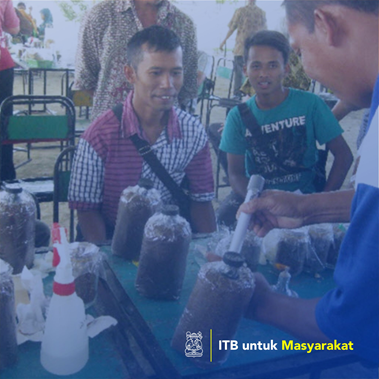

Edy Soewono
Blora Regency is one of the 35 districts contained in Central Java, at an altitude of 25 meters to 500 meters above sea level. The main problem faced in Blora Regency is a clean water crisis and poverty. Some Blora residents have jobs as farmers, the use of feed ingredients still covers the grass from nature even though its availability is uncertain and tends to be limited. In addition to animal feed, Blora Regency has the potential in agriculture, namely oyster mushroom cultivation. Oyster mushrooms have a high nutrient content, relatively easy to cultivate, and demand for oyster mushrooms has always increased every year. This makes oyster mushrooms as a tempting business opportunity. But many oyster mushroom farmers have failed in producing its fungus due to less understanding the ways and techniques of oyster mushroom cultivation that are good and true. Therefore, oyster mushroom cultivation training was carried out as a provision to the prospective producers of oyster mushrooms so that the production was getting better. The program begins with training program planning, coordination with the Regional Government of Blora Regency, preparation of the place, facilities and infrastructure and collecting trainees who are technically coordinated by the local government. As part of educational media, ITB students are involved to assist in the process of implementing training activities. Monitoring activities will be carried out later in the form of visits as part of the evaluation of the activities that have been implemented, including providing recommendations to the Regional Government. This program is expected to increase community economic activities.
Implementation of social care activities in the form of education / counseling / mentoring, pioneering business groups and SME development
The Blora community has not known about the potential for the use of silage and fermented animal feed. In addition, not many Blora residents are aware of the potential of oyster mushroom cultivation. The community still considers difficult oyster fungus cultivation, full of risk, and requires large capital.